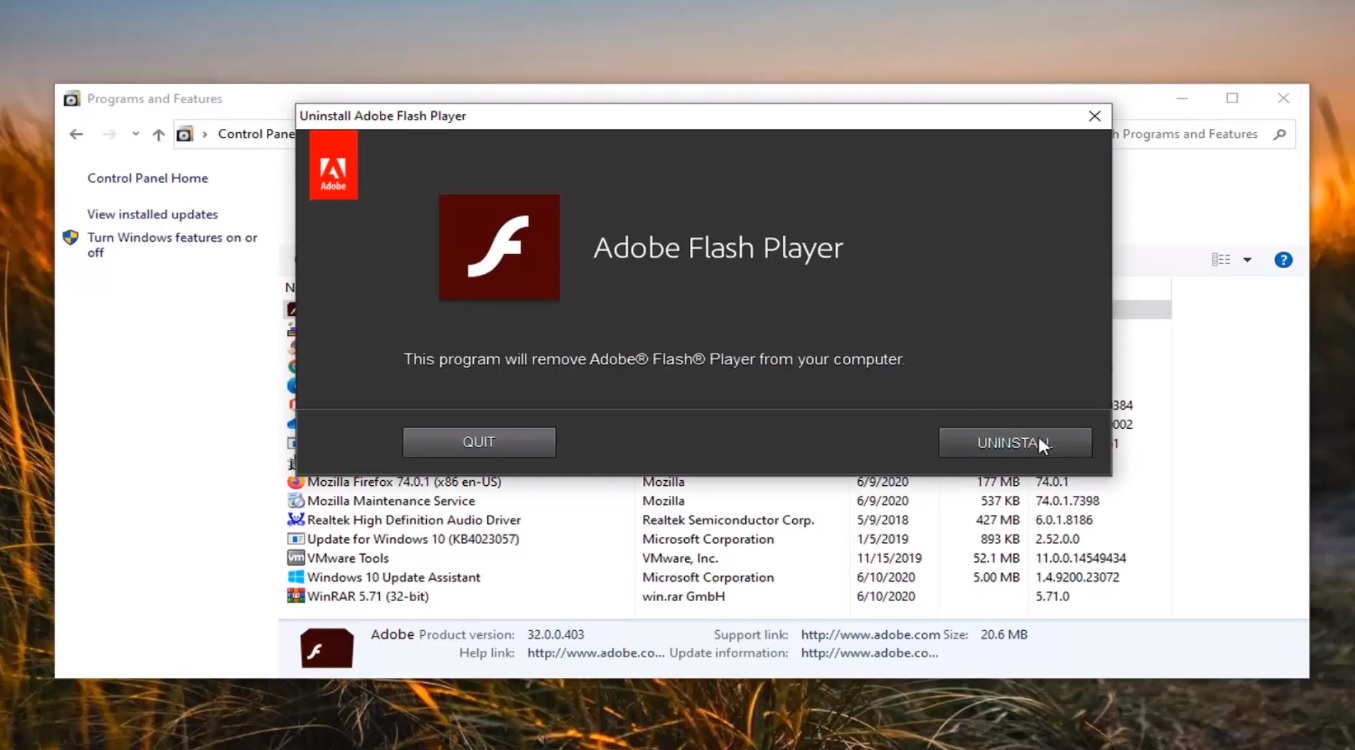
- #Adobe flash player uninstaller osx how to#
- #Adobe flash player uninstaller osx for mac os#
- #Adobe flash player uninstaller osx mac os x#
- #Adobe flash player uninstaller osx mac os#
If a prompt appears, click Open to open the downloaded file. After that, go to Apps and find Adobe Creative Cloud there.

This is because if it is running in a browser it cannot be uninstalled. Adobe Flash Player is DEAD – Uninstall the plugin immediately. Adobe has officially killed off Flash Player, the buggy, hated, security vulnerability of a web browser plug-in that was once widely used for viewing rich … Adobe Flash Player EOL General Information Page.
#Adobe flash player uninstaller osx mac os#
The Mac OS version appears in the About This Mac dialog: Why Flash Isn’t Supported on iOS and iPadOS Devices. I purchased IPad pro and there is no availability of flash for this device. As adobe announced, flash player support will be dismissed end of 2020/beginning of 2021. Therefore, at this point, to uninstall Flash Player, the first thing we do is close all functioning web browsers. Tip: If you don’t see the app and are positive that Flash Player is in fact installed on your Mac, download the Adobe Flash Player uninstaller from Adobe’s website. Adobe drops support for Flash Player advises to uninstall it from Mac and Windows In just under 2 weeks, Adobe will block all Flash content from working in Flash Player. Since Adobe no longer supports Flash Player after Decemand blocked Flash content from running in Flash Player beginning January 12, 2021, Adobe strongly recommends all users immediately uninstall Flash Player to help protect their systems. Download the uninstaller for Flash Player.
#Adobe flash player uninstaller osx how to#
RELATED: How to Uninstall and Disable Flash in Every Web Browser. Let the application run to completion, and when finished click on “Done” or just quit the app.

As previously announced, Adobe has terminated support for Flash Player (since 1 January 2021), and Flash content running in Flash Player will be blocked by Adobe from the 12th of January 2021. If enterprises are running applications based on adobe flash, it is strongly recommended to migrate them and disable adobe flash player on all clients, as also security fixes will be discontinued. By January 12, 2021, Adobe will block Flash content from running in Flash Player. Once completed, the uninstaller will close automatically. In the settings window, find and click on Apps. More importantly, Flash has been a trojan horse for various cybercriminals and invasive malware.Download Flash Player. Can we live without Flash Player?Īdobe decided to end the Flash Player support as users have continuously declined, particularly because of the existence of more secure programs like WebGL, HTML5, and WebAssembly. Under the Adobe Flash Player plug-in, click on "Disable". In Chrome's location bar, type "chrome://plugins/" and press Enter. Disabling this plug-in should be done in Chrome settings. For those usingLinux Mint, Debiann or Ubuntu, you can uninstall it by running the commands below.įor the NPAPI or Firefox: sudo apt-get remove flashplugin-installerįor the PPAPI or Chromium: sudo update-pepperflashplugin-nonfree -uninstall Flash Player on Chromeįlash Player is included in Chrome's bundled plug-ins. How to Uninstall Flash in Windows on Linuxįor Linux, uninstalling Flash depends on how the software was installed. Run the uninstaller and the Flash software will be removed. To uninstall these plug-ins, go to Adobe website and download the plug-in uninstaller.

#Adobe flash player uninstaller osx for mac os#
There are two Flash plug-ins for Mac OS X: PPAPI plug-in for Chromium and Opera as well as NPAPI plug-in for Firefox and Safari.
#Adobe flash player uninstaller osx mac os x#
Look for any Flash plug-ins, and uninstall all that begins with "Adobe Flash Player." How to Uninstall Flash in Windows on Mac OS X

To uninstall Flash, go to the Control Panel and view the installed programs list. Currently, there are three Flash player plug-ins for Windows: NPAPI plug-in for Firefox, ActiveX plug-in for Internet Explorer, and PPAPI plug-in for Chromium and Opera.


 0 kommentar(er)
0 kommentar(er)
